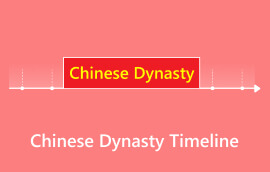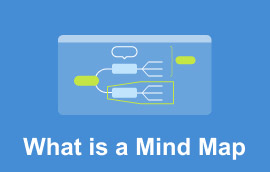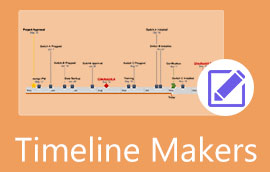How to Make an Indian History Timeline
India has a prominent position in history. As one of the cradles of ancient civilizations, it has demonstrated rich cultural diversity and profound historical accumulation, which has had an important impact on the development of global history. It's meaningful for us to learn the history of India. However, the Indian history is long and difficult for us to grasp. A timeline can help us better understand the complex history. Follow us to learn how to make an Indian history timeline.

Part 1. How to Make India History Timeline
To better understand the history of India, we can use a timeline to tease out the major events in the history of India.
MinOnMap is a mind-mapping software with a convenient platform to create and visualize data, ideas, and processes, which is a good choice for making timelines. It has a free version that supports us making Indian history timelines for free on desktop and online. Besides, this software works with all major web browsers such as Chrome, Firefox, etc., and we can make timelines on any device.
Secure Download
Secure Download
In addition, MindOnMap supports real-time collaboration, where we can edit and draw timelines together, increasing productivity and collaboration.
Now, let's look at how to use MindOnMap to establish an Indian history timeline.
Visit theMindOnMap homepage on our browser. Then, click Create Online on the homepage to jump to the interface of the operation.
Tip: You can also download this software to use it on your Windows and Mac computers.
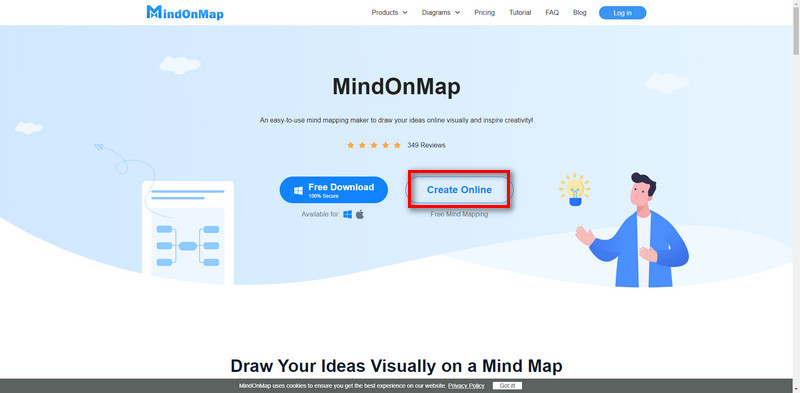
Click New on the left menu bar and choose a Fishbone model that can intuitively show the temporal context to establish a mindmap of the Indian history timeline.
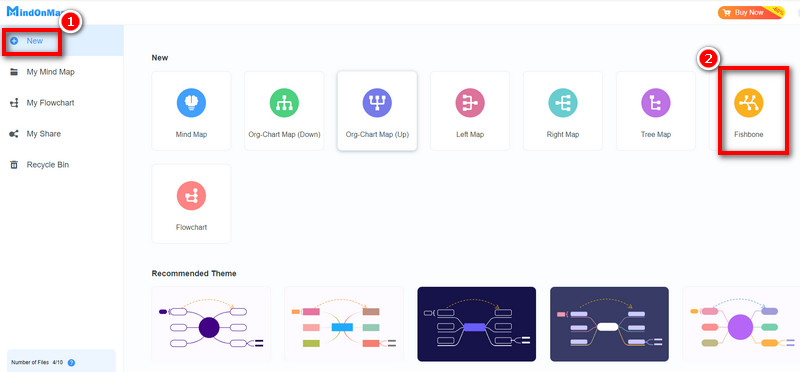
Enter the information about Indian history in the textbox. Click the textbox that we want to add a subtopic first and then choose Subnode in the Add Topic toolbar to add a subtopic.
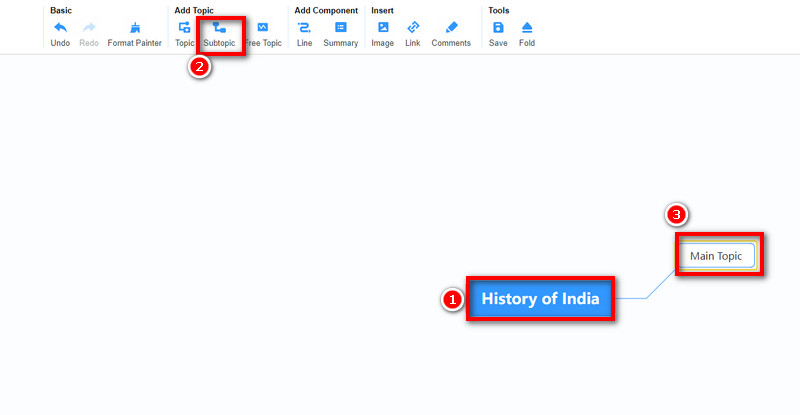
Go to the right Style setting to change the layout of the textbox or to mark the different years to distinguish different contents.
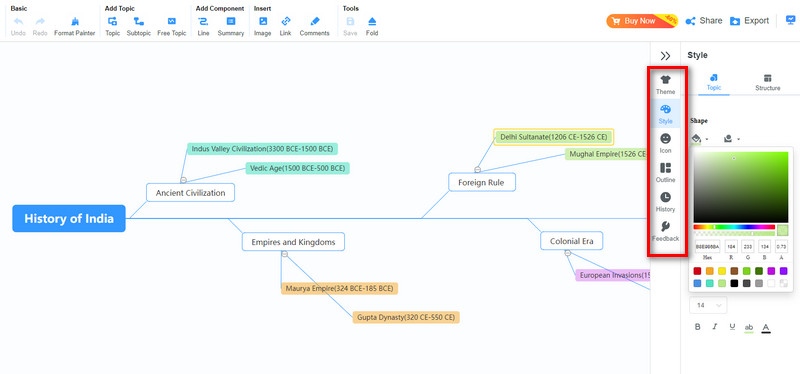
To make Indian history vivid, we can add images. Select the textbox we want to edit first, and then click Image in the Insert toolbox to add or remove images.
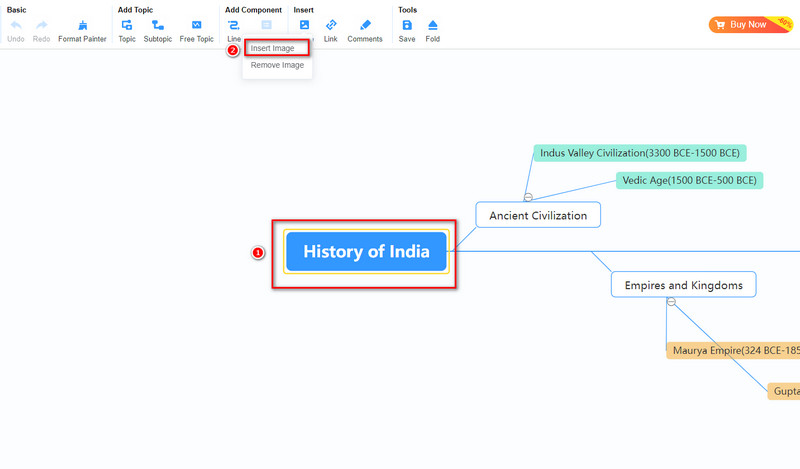
Repeat steps 4, 5, and 6 to add more information about Indian history. And we will get an Indian history timeline.
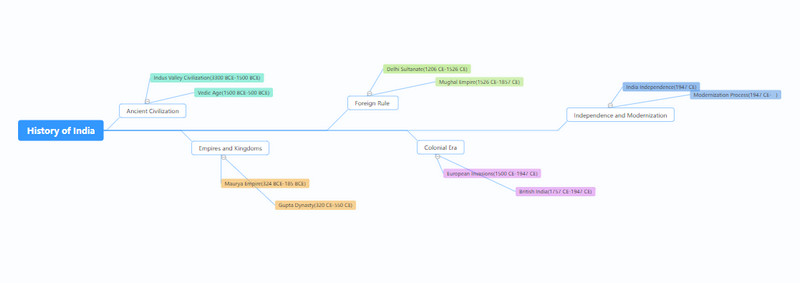
We can rename this mindmap on the top left corner as Indian History or others. Then, click Share to copy the link of this timeline or Export to save the JPG image of our timeline.
Tip: We can export SD-quality JPG images with watermarks for free. You can also upgrade to enjoy all benefits, such as export to Word, PDF, high-quality SVG, etc.
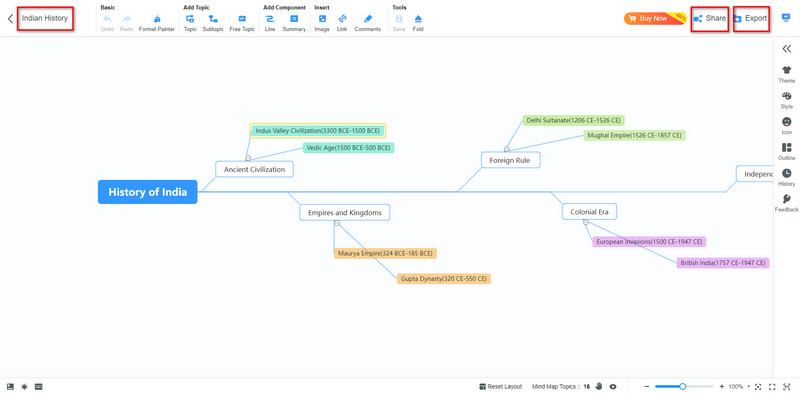
Part 2. India History Explanation
India boasts a long history, ranking among the earliest civilizations to emerge in the world. Now, follow us to have a deep understanding of the history of India.
Indian history can be divided into 5 phases.

I. Ancient Civilization
Indus Valley Civilization (3300 BCE-1500 BCE): This was the first known human civilization on the Indian subcontinent, existing from approximately 2500 BCE to 1500 BCE, primarily in present-day Pakistan. This civilization made significant strides in urbanization, sculpture, architecture, trade, and agriculture.
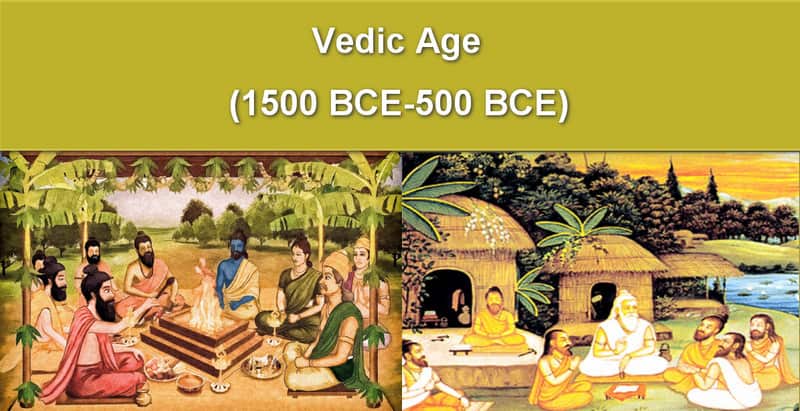
Vedic Age (1500 BCE-500 BCE): Around 1500 BCE, a branch of the Aryan people originally residing in Central Asia migrated to the South Asian subcontinent, conquering the local indigenous population and establishing Vedic culture. During this period, Brahmanism gradually evolved, and the caste system was established.
II. Empires and Kingdoms
Maurya Empire (324 BCE-185 BCE): In 324 BCE, Chandragupta Maurya founded the Maurya Empire, marking the first significant empire in Indian history. Under Ashoka, the empire reached its zenith, and Buddhism began to spread to other regions of Asia.
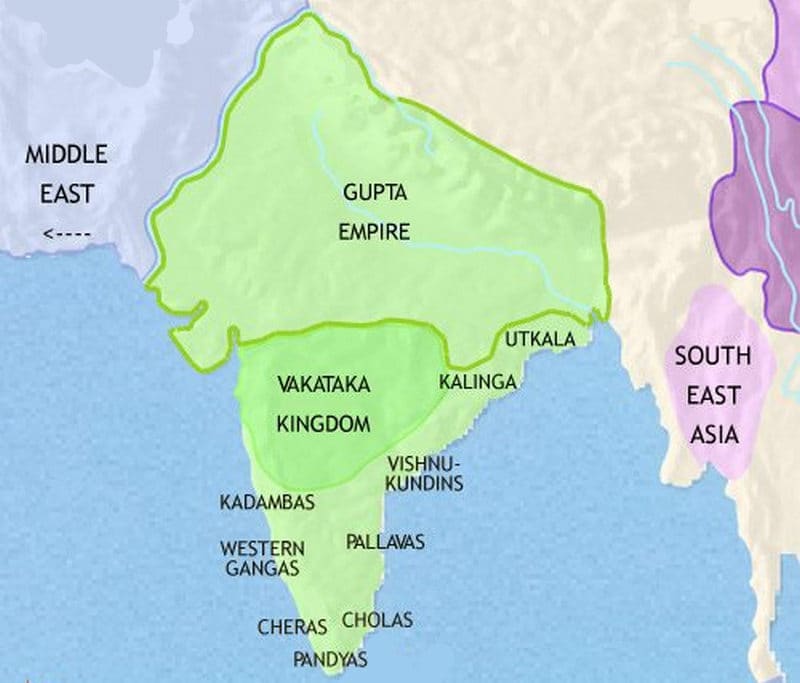
Gupta Dynasty (320CE-550 CE): In the 4th century CE, Northern India fell into disarray, but the Gupta Dynasty gradually rose to prominence. The Gupta Dynasty was the last dynasty established by Indians and marked the transition from a slave society to a feudal society in India.
III. Foreign Rule
Delhi Sultanate (1206 CE-1526 CE): Beginning in the 7th century, Muslim forces gradually infiltrated India. In 1206, the Delhi Sultanate was established, marking the first stable Islamic regime in Indian history. Ruled by Afghans and Turks, the Delhi Sultanate underwent several dynasties until it was replaced by the Mughal Empire in 1526.
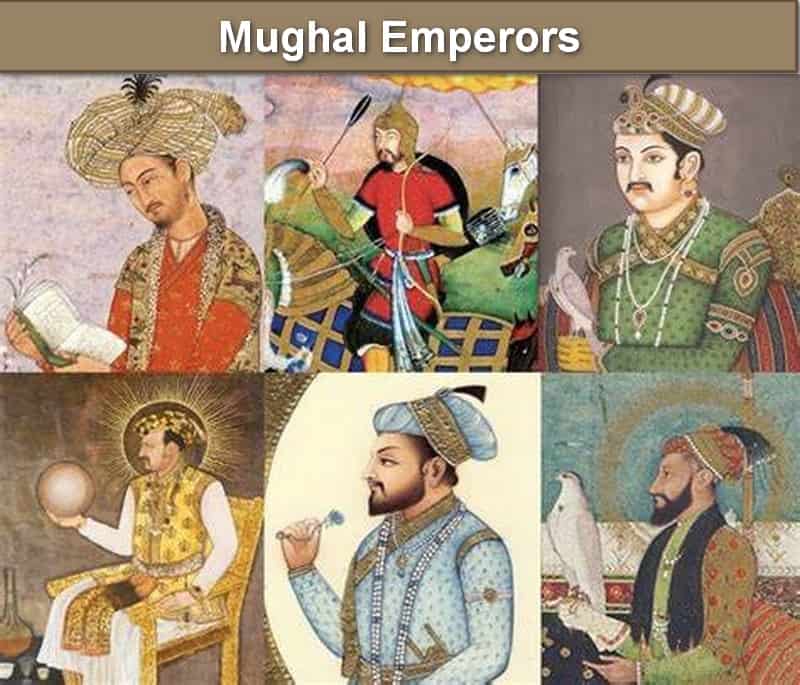
Mughal Empire (1526 CE-1857 CE): In 1526, Babur, a direct descendant of Timur the Lame, founded the Mughal Empire. As the last significant dynasty in Indian history, the Mughal Empire witnessed the development of the Indian economy and culture during its reign.
IV. Colonial Era
European Invasions (1500 CE-1947 CE): Starting in the 16th century, European powers such as Portugal, the Netherlands, and France invaded India successively. In 1600, the British East India Company was established in India, gradually gaining control over India's trade and political power.
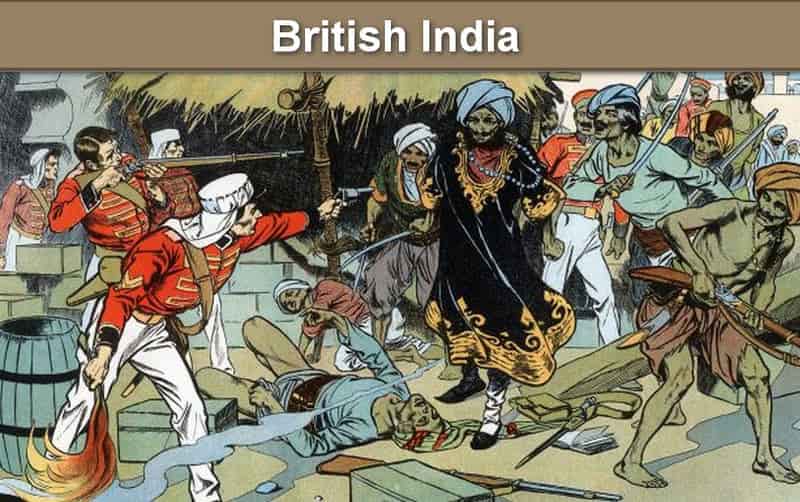
British India (1757 CE-1947 CE): Following the Battle of Plassey in 1757, Britain gradually incorporated India into its colonial system. By the mid-to-late 19th century, India had become one of Britain's largest colonies.
V. Independence and Modernization
Indian Independence (1947 CE): After prolonged struggles and negotiations, India officially declared its independence on August 15, 1947. However, due to disputes over the territory of Kashmir, India and Pakistan engaged in numerous conflicts and wars.
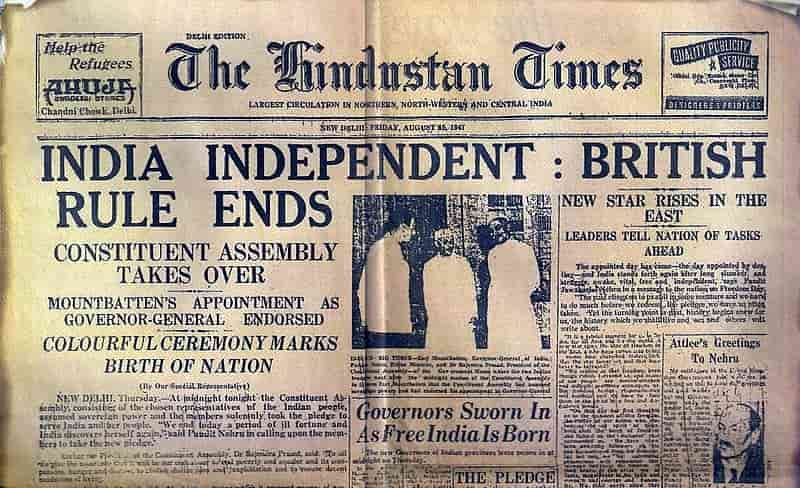
Modernization Process (1947 CE- ): After independence, India embarked on the path of modernization, achieving remarkable accomplishments in economics, technology, culture, and other fields. Today, India stands as the world's largest recipient of outsourcing services and the second-largest software powerhouse, second only to the United States.
In conclusion, Indian history is an epic rich in diversity, twists, and transformations. From ancient civilizations to a modern nation, India has faced numerous challenges and opportunities, forging unique cultures and traditions along the way.
Part 3. FAQs
What was India called before India?
Bharat was the most popular name for India before called India.
When was India established?
The establishment of India as a nation dates back to January 26, 1950.
Who found India?
During the reign of King Manuel I in 1495–1499, Portuguese explorer Vasco da Gama led the first known expedition from Europe to India directly via the Cape of Good Hope, which is known as the Portuguese discovery of the sea route to India.
Conclusion
Today, we introduce how to make an Indian history timeline with an effective tool MindOnMap, and give an explanation of the history of India. History is the treasure of mankind and learning history is meaningful. To learn the history of more countries, such as US history, it is an effective way to use MindOnMap to make timelines that help understand the history better.
Hoping this article is helpful to you. We would appreciate it if you could give a high rating.









